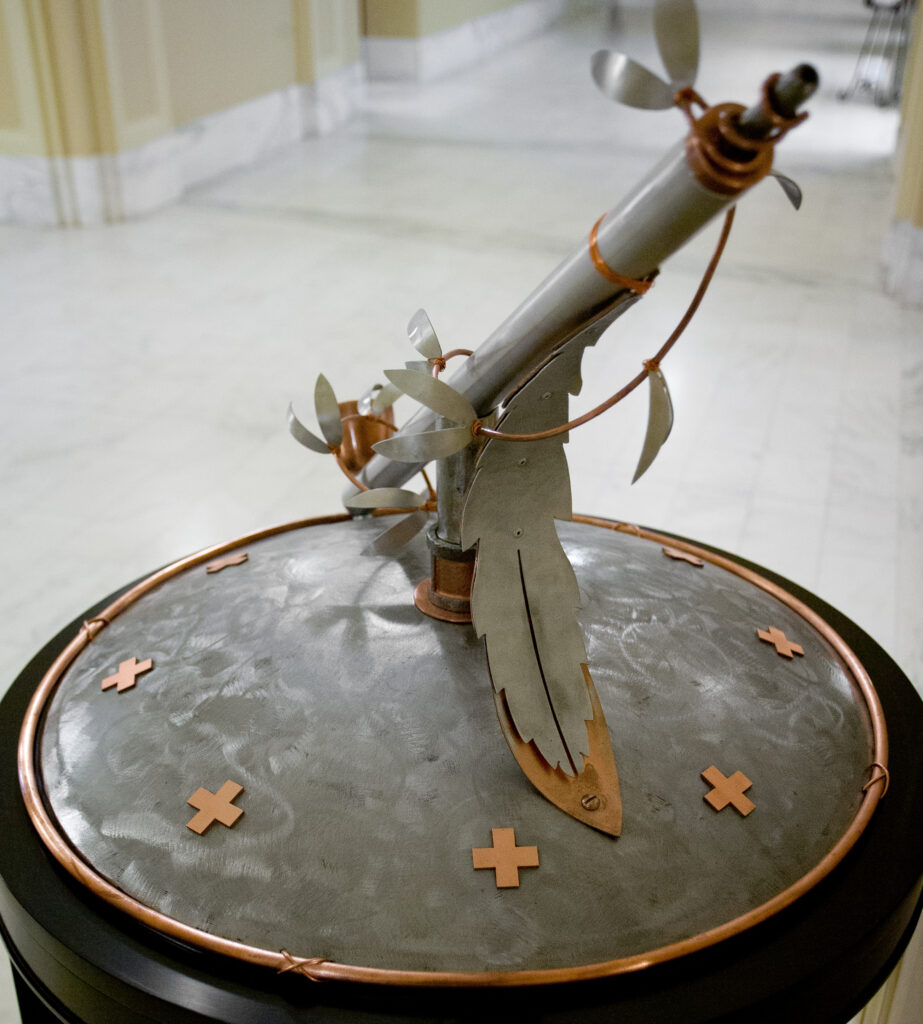Artist: Debby Williams
This copper, steel and aluminum sculpture is a three-dimensional representation of the State Flag of Oklahoma. The primary element of the flag is an Osage warrior’s shield, decorated with six painted crosses on the face. The lower half of the shield is fringed with seven eagle feathers. A calumet or peace pipe and an olive branch are crossed at an angle in front of the shield. The shield represents defensive warfare, but it is overshadowed by the love of peace on the part of a united people.
The familiar shield and pipe are recognized by many as images from the State Flag, but these were not always the elements of Oklahoma’s banner. The state’s first flag was adopted in 1911, a white star bearing a blue numeral 46 on a red field, representing the red, white and blue of the American Flag. In the state’s second decade, the design lost favor among the populace. Following the Bolshevik Revolution, it was sometimes referred to as the “red rag of sedition” and it was also associated with red quarantine flags used to identify smallpox and Spanish influenza outbreaks.
In 1925, the Oklahoma chapter of the Daughters of the American Revolution held a contest requesting designs for a new state flag. The design submitted by Louise Funk Fluke of Shawnee was selected and presented to the legislature. They approved it and on April 2, 1925, it became the official emblem of Oklahoma.
“I have always been interested in sculpture and have a particular affinity for the textures of metals and the possibilities when working with them,” said artist Debby Williams. “I think I have always seen the design of the flag in three dimensions. Marrying the simple objects in our flag to symbolize the unity of complex societies creates, in my mind, an elegant and powerful statement.”
The sculpture was fabricated by the JYD Team of Oklahoma City – Cameron Eagle and Chuck Clowers. It is composed of copper, steel and aluminum.
Williams holds a masters degree in art history from the University of Oklahoma. She worked as the visual arts director for the Oklahoma Arts Council and as the director and chief curator of the Mabee-Gerrer Museum of Art before being named director of Oklahoma’s Art in Public Places in 2004. She is now the Executive Director of [Art Space] at Untitled. She has donated her sculpture to the Judicial Center Collection.
